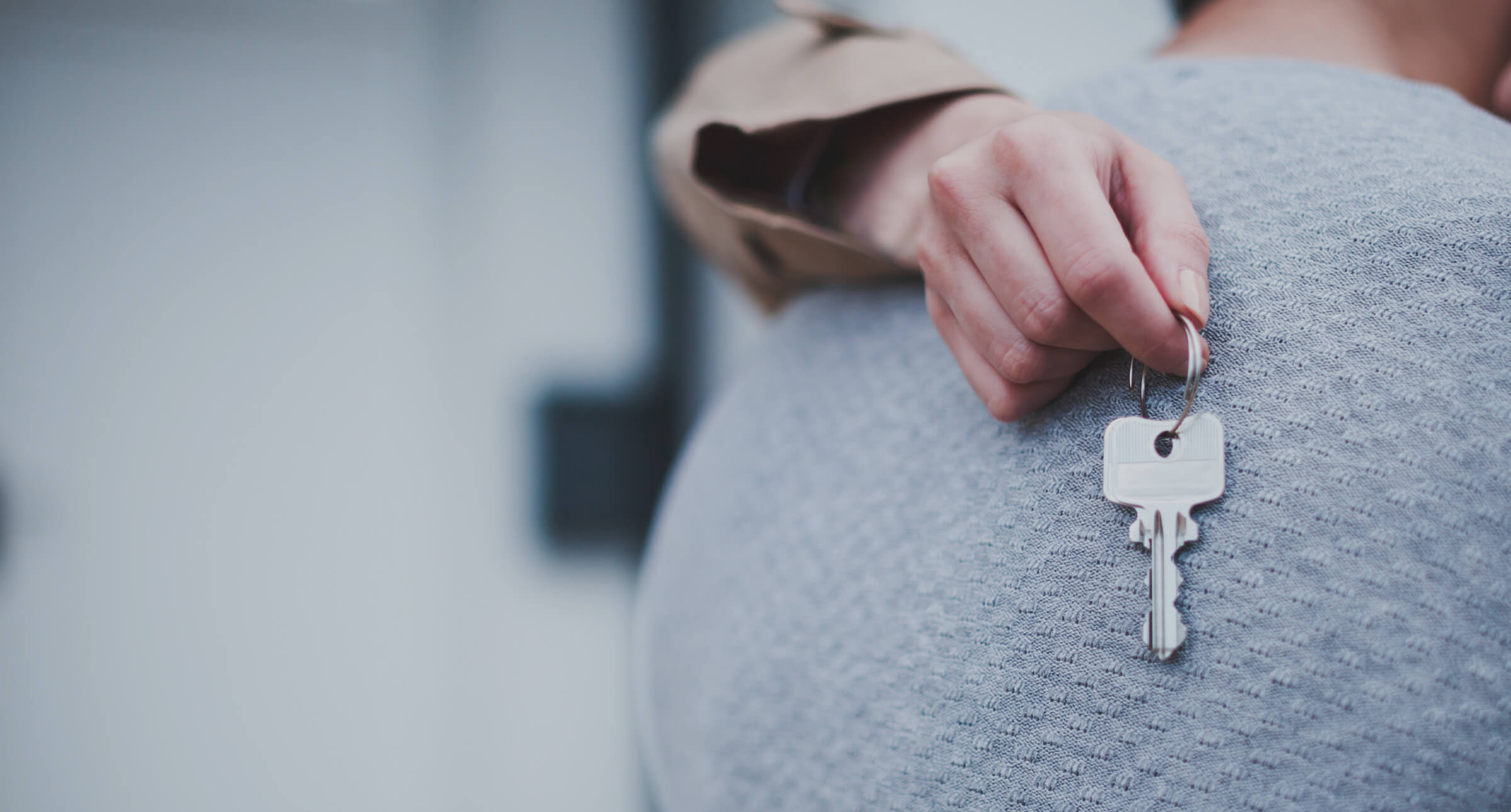Amy and Aamir have been married for ten years and after months of marriage counselling, they have made the decision to divorce.
The split is amicable, with both husband and wife in agreement that this is the right decision.
Since marrying in January 2013, the couple have purchased a house and have become parents to two children. Amy is keen to stay in the house with her children, but Aamir thinks it might be better to have a clean break, sell the property, and split the proceeds following the sale. To give each other space Aamir is considering buying a second property to live in, but is unsure of the financial pros and cons, or if this will be a tax efficient transaction.

An introduction to the new CGT rules that could impact how Amy and Aamir's assets are treated

Exploring what the financial impact of Aamir renting or buying a property could have before the sale of the family home

Uncovering the support available to Amy and Aamir during their divorce, and how the new CGT laws impact them


New Capital Gains Tax (CGT) rules impacting divorce
What are the new CGT rules that could impact how Amy and Aamir's assets are treated?
Private client associate Jan Tyley outlines why the new CGT laws matter to divorcing couples
Had Amy and Aamir decided to split a year ago, the CGT treatment of the division of their assets would have been treated quite differently, with new laws and guidelines coming to effect as of 6 April 2023.
What were the old CGT rules?
During and prior to the tax years 2022/23, a transfer of assets from Amy to Aamir, or from Aamir to Amy, would only have been treated as a disposal at no gain and no loss in the tax year in which they split permanently. Beyond that, any disposal/transfer between the couple would have been dealt with under the normal CGT rules. This means that, depending on when in the tax year Amy and Aamir had split up, they may not have had significant time to decide on how to divide things, and therefore still receive a favourable tax treatment.
Example:
- Amy and Aamir split on 1 January 2022
- Aamir moved out of the family home immediately
- They then sold the house in February 2023
Potential outcome: Aamir could have ended up having to pay CGT, because his period of ownership was not completely covered by principal Private Residence Relief (PPR).
What are the new CGT rules for 2023?
From 6 April this year, the changes to the CGT rules for separating couples has made the position easier for Amy and Aamir. They now have up to three tax years from the end of the tax year of separation to transfer assets between them, on a no gain and no loss basis. Therefore they have up to the end of the 2026/27 tax year, or longer – if the division of assets is made as part of a formal divorce agreement – to benefit from this tax treatment.
Is a house split 50/50 in a divorce?
In addition, if Aamir retains his share of the former matrimonial home and they decided to sell the property in the future, Aamir would have the option to claim Private Residence Relief (PPR) in relation to his share. Even if he had lived elsewhere in the meantime, no matter how long after they had split the sale occurs. He would, of course, need to weigh up the pros and cons of this if he had bought another property to live in in the meantime as he would only be able to claim PPR over one property for the period between moving out of the former matrimonial home and its subsequent sale.
Alternatively, if Aamir had transferred his interest in the former matrimonial home to Amy (as part of their divorce settlement) in return for an entitlement to a percentage of the sale proceeds on the future sale of the property, he would be able to apply the same tax treatment to the sale proceeds due to him as applied when he transferred his original interest in the house to Amy. So, if he had been able to claim PPR on the transfer of his share to Amy, he would be able to claim PPR in relation to his share of the sale proceeds.
These new rules enable Amy and Aamir to take more time to consider their position and decide on what is best for them and the children without the pressure to reach a financial settlement that the previous CGT rules placed on them.


Stamp Duty Land Tax: buying vs renting
What is the financial impact of Aamir renting our buying a property before the sale of the family home?
Solicitor, Chris Willows compares SDLT rules when renting or purchasing a second property
Aamir will need to consider higher rate Stamp Duty Land Tax (SDLT) when weighing up the financial pros and cons of buying a second property. Purchasers are subject to higher rate SDLT when they already own a property, and a second property is not replacing the original as their ‘main residence’. Amy and Aamir are considered one legal entity for SDLT purposes whilst they are married. Amy will still consider the original property as her ‘main residence’ and as such if Aamir buys the second property whilst he and Amy own the original, he will be subject to higher rate SDLT.
Purchasers who have disposed of their main residence either prior to or on legal completion of the purchase are not subject to higher rate SDLT. Therefore, if Aamir and Amy sell their main residence, and Aamir then buys a property, he will only pay standard rate SDLT.
How much is Stamp Duty Land Tax on a second property?
A third outcome is that Aamir buys a second property (whilst still owning the first), but can recover the higher rate SDLT at a later date. If a purchaser purchases a second property without disposing of their main residence, but does dispose of the original property within 3 years of legal completion of the second property, the higher rate SDLT can be recovered from HMRC.
Do you pay Stamp Duty Land Tax when renting?
SDLT does not apply to renting and if Aamir decides to rent whilst Amy lives in the main residence, he will not pay SDLT.
More from Residential Property, Farms & Estates Solicitor, Chris Willows


PPR and CGT tax implications under the new tax legislation
What support is available to Amy and Aamir? And what are the implications of new CGT laws?
Partner, Joanna Toloczko and Solicitor, Kirsty Henderson look at the support and challenges following the new CGT legislation
Amy and Aamir will need to reach an agreement about what should happen as far as the house is concerned. They might be able to do this on their own or they may need to appoint solicitors and/or a family mediator to assist with the negotiations. If they are not able to reach an agreement, an application will have to be made to the Court.
What is a fair financial settlement in a divorce?
The Court’s overriding objective is to achieve fairness between the parties. The Matrimonial Causes Act 1973 contains a checklist of factors that the Court must take into consideration when determining fairness. First consideration must be given to the welfare of any minor children of the family. For this reason, a Court may decide not to order the sale of the family home immediately unless, for example, Aamir could demonstrate that Amy and the children could rehouse without too much financial hardship.
How is property shared in a divorce?
It may be that Amy is able to afford to buy out Aamir’s interest in the property and take on the mortgage herself. However, it is possible that Aamir may have to wait before he is able to realise some or all of his interest in the property. In the meantime, either both parties will continue to hold the property jointly or the property could be transferred to Amy’s sole name with Aamir receiving his share of the house at a later date. In either case, there would be a legal document which sets out the extent of Aamir’s interest in the property and when he is entitled to realise his interest. Aamir’s interest may not necessarily be 50%. As for when Aamir receives his share of the house, there are various alternatives that can be considered including if Amy re-marries, cohabits or upon the children reaching a certain age.
Impact of the new CGT rules for 2023
CGT is a tax payable on the increase in value of certain assets. It normally does not apply to the property that you live in. Prior to 06 April 2023, when Aamir eventually received his money from the house, he may have found himself with a large tax bill for the gain he had made on the property for the period he was not living in the property.
Do I qualify for Private Residence Relief?
Under the new rules, spouses who retain an interest in the former family home may be able to obtain relief, known as Private Residence Relief (PPR), on the tax that would normally be payable on an increase in its value, provided certain conditions are met.
However, if by the time the family home is sold, Aamir has already purchased a second property for himself, Aamir will need to choose whether to apply the PPR to his interest in the former family home or his new property as PPR can only be applied to one property.
Recommendation: Amy and Aamir’s circumstances are very common and whilst there are many factors to consider, a solution will invariably be found with the help of professional advice. We would therefore recommend that professional advice is taken as soon as possible, to achieve the best possible outcome for Amy, Aamir and the children.
More from Family Partner, Joanna Toloczko / More from Family Solicitor, Kirsty Henderson

Legal Thinking Podcast - Mapping the divorce journey
When two people decide to separate, what might they need to consider about their divorce as they embark on the journey towards their new life?
In this episode of Legal Thinking, Ed and Liam welcome Jayne Martins, Partner in our Family team, alongside Claire Black, Divorce Coach, and Naomi Keith, Associate Partner and Financial Planner at Aspire to talk through keeping emotions in check, amicable divorces, and financial issues that can arise in the process of a divorce.
Related content
Want to find our more about our services and support? Find below a section of key pages to help you understand how we can help you.




